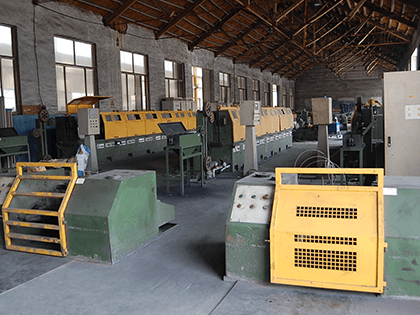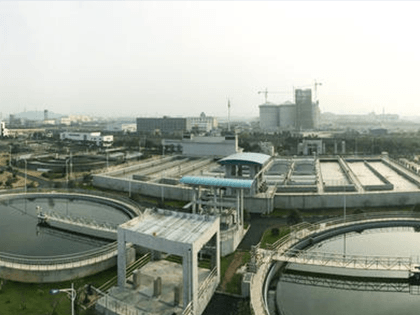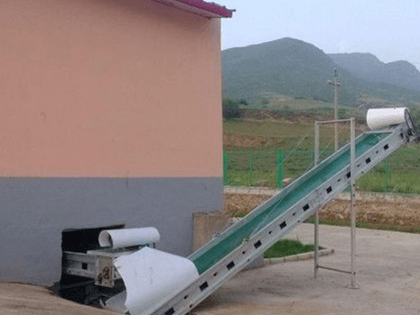Industrial sludge disposal: the process of sludge cement solidification
Author: Taida machine Release time:2016-08-17
Reading guidance:As early as 30 years ago, the solidification process began to be used to work on relevant researches on the radioactive waste liquid evaporation of radioactive waste liquid, ion exchange, coagulative p
As early as 30 years ago, the solidification process began to be used to work on relevant researches on the radioactive waste liquid evaporation of radioactive waste liquid, ion exchange, coagulative precipitation and secondary waste treatment. Although sludge cement solidification technology can make sludge treatment and disposal harmless and stable. However, for products after the solidification of the sludge cement also needs to be tested regularly to reduce the risk of environmental pollution. In the process of implementation of sludge solidification treatment, the following two points should be finished: first, hope that solidified body can be used as a resources; second, try to save materials and energy. Through the sludge cement solidification process, cement solidification process is not complicated. Materials used for solidification are cheap and various. Meanwhile, the process consumes less energy, so sludge cement solidification process industrial sludge has a good prospect.
The sludge treatment center adopts cement solidification with using Portland cement as curing agent and adding sand. The treatment center consider to reuse solids after solidification (mainly used as road order). The sludge cement solidification process is following: sludge-storage field - rubber tyred car - add cement according to certain proporption, sand and water - mixer - hopper - feeding device - molding machine - belt conveyor - maintenance - comprehensive utilization. The process can be divided into three stages, feeding, agitating and molding and maintenance.
Feed
Sludge processed is dehydrated sludge whose moisture content is from 65% to 75%. Sludge is conveyed in sludge dump site in our center. There are three cement tanks whose volumes are 30 tons at the southwest of factory for storing cement; there is sand dump site near sludge dump site for storing fine sand. Cement and sand are transported from outside.
Loader is used to put sludge and fine sand into rubber tyred car. Sludge will be put directly into rubber tyred car by cement tank. These materials are driven into feeder port of agitator by wheel barrow. All materials are sent to cement agitator according to the proportion of 6:3:1:2 (sludge, cement, fine sand and water). The proportion is decided according to normal situation.
Because the disposal amount of this center is small, manually feeding is considered. If disposal amount becomes larger, cement bin, and bin and sludge bin will be established. Realize mechanically feeding by using conveyor.
Stirring molding
Materials are agitated in agitator. There is stainless-steel bunker set in agitator. after being agitated, materials will go out from agitator’s exit. Then, materials will go into stainless-steel bunker directly. Then, go into former through electrical feeder. Materials are molded in former. Materials will enter maintenance chamber after molding.
Maintenance
Solidified materials will be maintained by steam. After achieving to a certain extend, materials are moved to outdoor maintenance field for natural maintenance. Finally, achieve strength requested by transportation and re-utilization.
Because sludge may contain matters which may disturb cement hydration reaction, such as oil, organic acid, sugar, metal oxide and various salts. These matters will cause abnormal work-ability and setting hardening. Then, small unstable solidification will be formed, which will weaken the adhesion of heavy metal and cement In order to avoid this situation, increased cement proportion; also, can add aluminum as the main raw material of the composite alumina additives whose raw materials are alumina (activated alumina) to romote the setting and hardening and close harmful metal. The proportion of additives is generally 5% ~ 10% of cement weight.
The final solidification effect of heavy metal of sludge is relevant to the proportion of sludge, cement, additives and additive kinds. Owing to different quality of sludge, leaching test and strength test are supposed to be carried out in order to get best proportion. In a word, try to use less cement in order to get solidification materials with certain strength. It must meet reutilization condition and is hard to leak.
Generally speaking, if you consider to reuse solidification materials, the process will be very complex. If sludge is only be used for landfill after solidification disposal, the process is present as following: sludge-storage field-rubber tyred car-add cement, sand and water according to certain proportion-mixing agitator-vessel or natural solidification-landfill. If sludge is used for landfill after solidification, there is no certain request for solidification strength. At this moment, we should mainly consider that the leak rate of heavy metal in solidified body should meet requests of environmental protection.
The sludge treatment center adopts cement solidification with using Portland cement as curing agent and adding sand. The treatment center consider to reuse solids after solidification (mainly used as road order). The sludge cement solidification process is following: sludge-storage field - rubber tyred car - add cement according to certain proporption, sand and water - mixer - hopper - feeding device - molding machine - belt conveyor - maintenance - comprehensive utilization. The process can be divided into three stages, feeding, agitating and molding and maintenance.
Feed
Sludge processed is dehydrated sludge whose moisture content is from 65% to 75%. Sludge is conveyed in sludge dump site in our center. There are three cement tanks whose volumes are 30 tons at the southwest of factory for storing cement; there is sand dump site near sludge dump site for storing fine sand. Cement and sand are transported from outside.
Loader is used to put sludge and fine sand into rubber tyred car. Sludge will be put directly into rubber tyred car by cement tank. These materials are driven into feeder port of agitator by wheel barrow. All materials are sent to cement agitator according to the proportion of 6:3:1:2 (sludge, cement, fine sand and water). The proportion is decided according to normal situation.
Because the disposal amount of this center is small, manually feeding is considered. If disposal amount becomes larger, cement bin, and bin and sludge bin will be established. Realize mechanically feeding by using conveyor.
Stirring molding
Materials are agitated in agitator. There is stainless-steel bunker set in agitator. after being agitated, materials will go out from agitator’s exit. Then, materials will go into stainless-steel bunker directly. Then, go into former through electrical feeder. Materials are molded in former. Materials will enter maintenance chamber after molding.
Maintenance
Solidified materials will be maintained by steam. After achieving to a certain extend, materials are moved to outdoor maintenance field for natural maintenance. Finally, achieve strength requested by transportation and re-utilization.
Because sludge may contain matters which may disturb cement hydration reaction, such as oil, organic acid, sugar, metal oxide and various salts. These matters will cause abnormal work-ability and setting hardening. Then, small unstable solidification will be formed, which will weaken the adhesion of heavy metal and cement In order to avoid this situation, increased cement proportion; also, can add aluminum as the main raw material of the composite alumina additives whose raw materials are alumina (activated alumina) to romote the setting and hardening and close harmful metal. The proportion of additives is generally 5% ~ 10% of cement weight.
The final solidification effect of heavy metal of sludge is relevant to the proportion of sludge, cement, additives and additive kinds. Owing to different quality of sludge, leaching test and strength test are supposed to be carried out in order to get best proportion. In a word, try to use less cement in order to get solidification materials with certain strength. It must meet reutilization condition and is hard to leak.
Generally speaking, if you consider to reuse solidification materials, the process will be very complex. If sludge is only be used for landfill after solidification disposal, the process is present as following: sludge-storage field-rubber tyred car-add cement, sand and water according to certain proportion-mixing agitator-vessel or natural solidification-landfill. If sludge is used for landfill after solidification, there is no certain request for solidification strength. At this moment, we should mainly consider that the leak rate of heavy metal in solidified body should meet requests of environmental protection.
:What is the next step for printing and dyeing sludge after disposed? :Improvements are still needed of sludge disposal in Guangdong province
Relevant news
- 2016-01-12OSC-II Model Sludge Dryer Deliv
- 2016-01-1215T/Day Aerobic Dynamic Ferment
- 2016-01-12Matters Should Be Paid Attentio
- 2016-01-12Methods exploration of chemical
- 2016-01-12Analysis of circulating fluid b
Industry trends
- 2016-01-12Comparison Between Different Sl
- 2016-01-12Adding Calcium and Stable Dispo
- 2016-01-12Sludge Treatment: Methods for S
- 2016-01-12Use Dyeing Sludge As Resource
- 2016-01-12Current situation of sludge dis
Hot spots
Hot-sale products

- Leather Industry Sludge Drying
Production Capacity:1-2200t/h

- Welding Plating Sludge Drying S
Production Capacity:1-2200t/h

- Municipal Sludge Drying Solutio
Production Capacity:1-2200t/h

- Manure Sludge Drying Solution
Production Capacity:1-2200t/h
 中文
中文 English
English Home
Home
